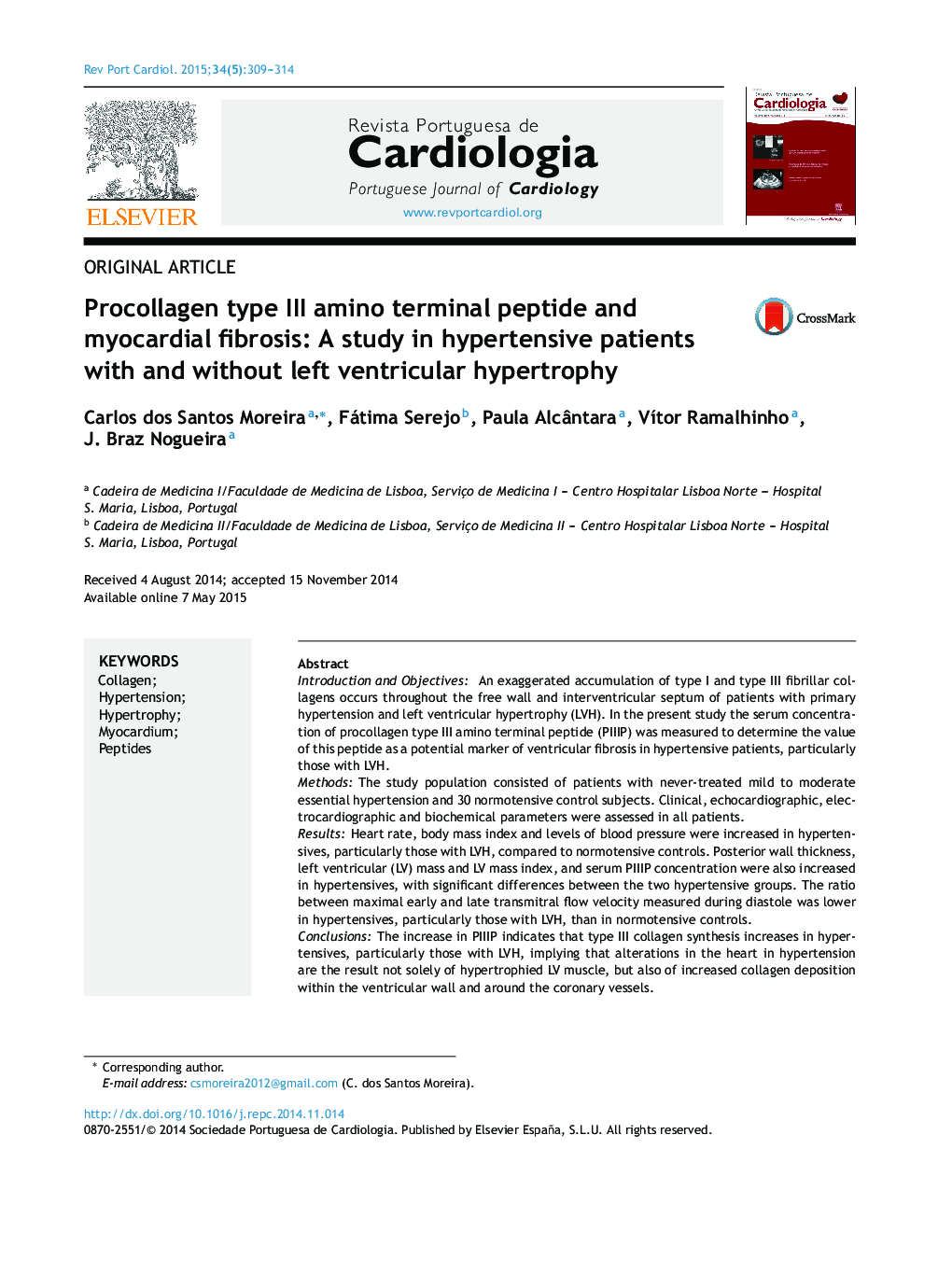| کد مقاله | کد نشریه | سال انتشار | مقاله انگلیسی | نسخه تمام متن |
|---|---|---|---|---|
| 1125864 | 954619 | 2015 | 6 صفحه PDF | دانلود رایگان |

Introduction and ObjectivesAn exaggerated accumulation of type I and type III fibrillar collagens occurs throughout the free wall and interventricular septum of patients with primary hypertension and left ventricular hypertrophy (LVH). In the present study the serum concentration of procollagen type III amino terminal peptide (PIIIP) was measured to determine the value of this peptide as a potential marker of ventricular fibrosis in hypertensive patients, particularly those with LVH.MethodsThe study population consisted of patients with never-treated mild to moderate essential hypertension and 30 normotensive control subjects. Clinical, echocardiographic, electrocardiographic and biochemical parameters were assessed in all patients.ResultsHeart rate, body mass index and levels of blood pressure were increased in hypertensives, particularly those with LVH, compared to normotensive controls. Posterior wall thickness, left ventricular (LV) mass and LV mass index, and serum PIIIP concentration were also increased in hypertensives, with significant differences between the two hypertensive groups. The ratio between maximal early and late transmitral flow velocity measured during diastole was lower in hypertensives, particularly those with LVH, than in normotensive controls.ConclusionsThe increase in PIIIP indicates that type III collagen synthesis increases in hypertensives, particularly those with LVH, implying that alterations in the heart in hypertension are the result not solely of hypertrophied LV muscle, but also of increased collagen deposition within the ventricular wall and around the coronary vessels.Thus, measurement of serum PIIIP could be a practical and useful tool in the non-invasive assessment of myocardial remodeling in hypertension.
ResumoIntrodução e objetivosNos doentes com hipertensão arterial (HT) ocorre uma acumulação exagerada de fibras de colagénio tipo I e III quer a nível da parede livre, quer ao longo do septo interventricular do ventrículo esquerdo. Esta acumulação é mais marcada nos HT que apresentam hipertrofia ventricular esquerda. O objetivo do presente estudo, foi a determinação da importância da concentração sérica de procolágeno tipo III, como marcador de fibrose miocárdica, nos hipertensos, principalmente com hipertrofia ventricular esquerda.MétodosA população estudada era composta por pacientes com ligeira a moderada hipertensão essencial nunca tratados (HT) e por 30 pacientes normotensos. Os parâmetros clínicos, ecocardiográficos, eletrocardiográficos e bioquímicos foram avaliados em todos os pacientes.ResultadosOs hipertensos apresentavam valores de pressão arterial, frequência cardíaca e índice de massa corporal aumentados quando comparados com os normotensos. Os hipertensos apresentavam valores mais elevados de índice de massa do ventrículo esquerdo e de concentração sérica de PIIIP, e menor relação entre as velocidades de fluxo mitral máxima precoce e a máxima final avaliadas durante a diástole. Os HT com hipertrofia ventricular esquerda apresentavam diferenças significativas destes parâmetros em relação aos HT e normotensos sem hipertrofia ventricular esquerda.ConclusãoA concentração sérica PIIIP no soro poderá ser um marcador útil e prático para avaliar de forma não invasiva a remodelação miocárdica, bem como um índice do colagénio depositado nestes pacientes hipertensos, podendo apoiar na escolha criteriosa do tratamento mais eficaz da hipertensão arterial.
Journal: Revista Portuguesa de Cardiologia - Volume 34, Issue 5, May 2015, Pages 309–314